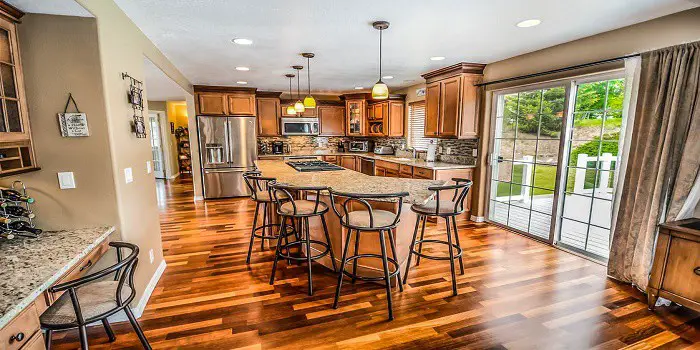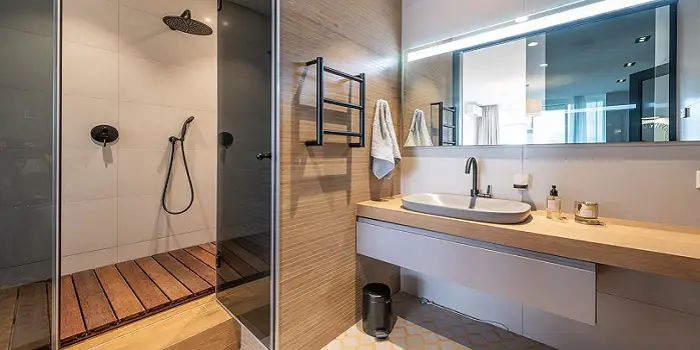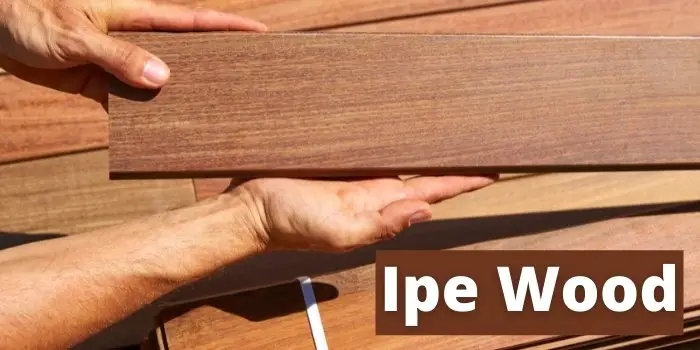
One of the most unique woods in the world, the Ipe is not that popular with architects or builders for good reasons.
While exotic and unique with qualities that seemingly make it perfect for decks, Ipe does have some environmental concerns that need to be addressed.
For those who are considering Ipe wood, you need to understand what it is, why it has environmental issues, and what is recommended for its use.
Ipe Wood
| Scientific Name: | Handroanthus spp. (formerly placed in the Tabebuia genus) |
| Tree Size: | 100-130 ft (30-40 m) tall 2-4 ft (.6-1.2 m) trunk diameter |
| Janka Hardness: | 3,510 lbf (15,620 N) |
| Type: | Hardwood |
| Odor: | Mild scent |
| Specific Gravity (Basic, 12% MC): | .91, 1.10 |
| Common Uses: | Tool handles and other turned objects |
What is Ipe Wood?
Coming from the forests of Central and South America, Ipe is also called lapacho or Brazilian walnut. It does have some unique features.
Ipe is quite hard, durable, and weathers quite well. This means that under normal use conditions, Ipe will last upwards of 25 years before needing to be replaced.
That is why years ago, many architects recommended Ipe for decks because of its strength and longevity.
Another advantage of Ipe is that it is as resistant to fire as concrete or steel. The wood is so dense that it will not float in water.
But these attributes also make Ipe difficult to work with, given its resistance to nails and sawing.
Even so, Ipe was popular for a long time thanks to its durability and inherent strength. But in recent times, Ipe has fallen out of favor for environmental reasons.
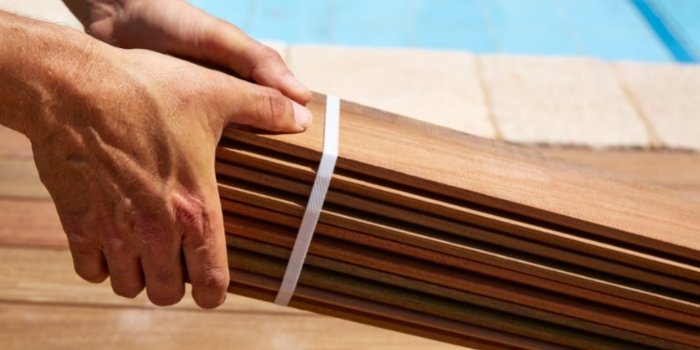
Sustainability Concerns of Ipe
Overall, Ipe is quite sustainable because of its carbon sequestration and storage.
But these trees are vulnerable to being overharvested.
A long history of illegal logging combined with the distances that must be traveled has made Ipe less sustainable compared to other types of wood.
Besides being used for decks, Ipe is well suited for furniture.
It sports a low carbon footprint when the waste products from the wood are used to create biomass pellets during the harvesting process.
However, despite all its advantages, Ipe is no longer a top choice for many architects and designers, especially those who have environmental concerns.
This mostly comes from concerns about the illegal harvesting, processing, and marketing of wood.
Ipe is relatively rare and only grows in low-density conditions.
This means that gathering enough Ipe trees can be difficult without spreading out considerably.
The low density translates to many hectares of rainforests being cleared just to gather relatively few numbers of Ipe trees.
The result is that many other trees which have far less value are cut down and left in place.
Add to this the common misidentification of Ipe with cumaru, a tree in South America, and even more waste is generated.
The number of Ipe remaining in the world is relatively small.
Thanks to many decades of overharvesting, the Ipe is now difficult to find.
Without significant rules and regulations in place, the Ipe may become extinct as a result of the overharvesting and illegal logging which is still taking place.
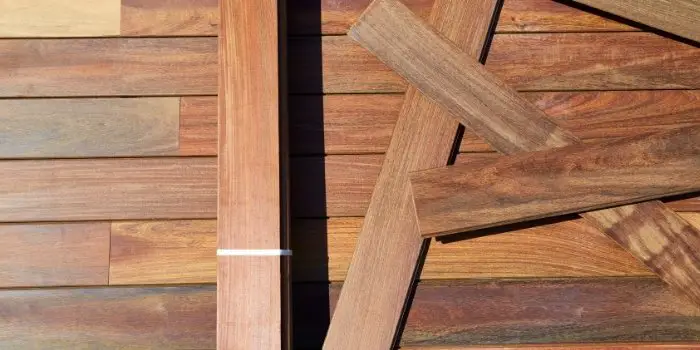
Is Brazilian Walnut (Ipe) Good to Use Outdoor?
Ipe wood is a popular option for outdoor usage because it resists fading even when exposed to the UV rays of the sun.
It is quite durable, and the natural oils it produces help repel insects, rot, and fungi.
Brazilian Walnut or Ipe is also dense, meaning that it resists water quite well even when unprotected by oils, stains, or paint.
This means you can trust this wood to last for at least 40 years with minor maintenance.
The only real downside apart from its price is that Brazilian walnut is not the easiest wood to work with.
You will need to prepare the walnut wood properly so it can be glued together to last. But it is cheaper than teak and so durable that the preparation will be worth it.
Current State of Ipe – What Can You Do About It?
Despite its vulnerability, the Ipe is still quite popular, and it will be harvested for the foreseeable future.
About the only curbs to the harvesting are its limited use as flooring or decking.
For those who have concerns about the environment, then Ipe should never be chosen as the wood for any project with one exception.
Reclaimed Ipe offers a good solution for those who want to use the wood but do not want to have any new Ipe trees harvested.
Reclaimed Ipe wood means that it can be used for projects such as furniture and the like.
Plus, you can also use reclaimed Angelique, a wood that is quite similar in appearance to Ipe.
This type of wood can be used in projects as well to augment the Ipe that is present.
But if reclaimed Angelique is not present, then you can use reclaimed teak.
Teak is a wood that is also quite similar to Ipe. It offers many of the same benefits, including its strength, durability, and resistance to rot, insects, and disease.
Plus, it has the advantage of being easier to work with compared to Ipe. This makes the construction process go much quicker.
The Conclusion
The focus on Ipe as the first choice in projects made of wood has dropped considerably over the years.
With concerns about the environmental impact that harvesting Ipe has raised, few designers or builders are now sourcing Ipe.
Given that hectares of trees must be cleared to find any Ipe, it has become a wood that is no longer desirable.
If you have environmental concerns, then do not use Ipe in your decking or flooring project.
The only time that Ipe should be considered is when the project is small, and the source of the Ipe is from an already fashioned source.
In other words, if you get Ipe that has already been used in another project, then you can apply it to your own. Otherwise, stick to woods such as cumaru or teak.

Hi, I am Mark Garner a professional carpenter, woodworker, and DIY painter. I live in the small city of Peoria, Arizona as a semi-retired woodworker. I have started this blog with a simple motive to help you with my wood experience in this sector. If you like to know more about what I love doing and how it all got started, you can check more about me here.


